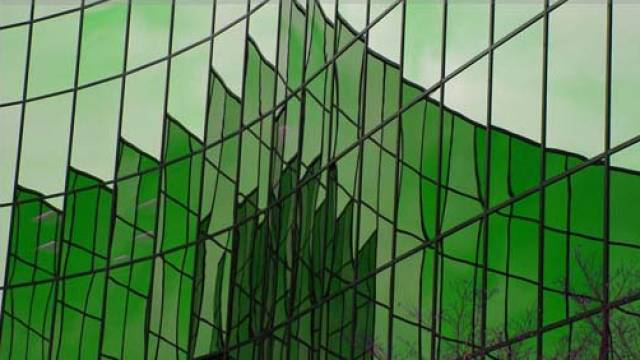Exhibitors at the American Institute of Architects (AIA) 2012 National Convention and Design Exposition will showcase new technology and products for use in the glass and glazing industry. Here are some highlights to expect on the show floor.
As the American Institute of Architects (AIA) 2012 National Convention and Design Exposition opens in Washington, D.C., exhibitors will showcase new technology and products for use in the glass and glazing industry. One focal point will be increasing the thermal performance of commercial glazing systems. This has become paramount as new energy codes continue to be adopted and enforced. Here are some highlights to expect on the show floor.
A number of glass fabricators offer triple-glazed units that minimize heat transfer, improving thermal performance. However, while a third pane of glass adds to the insulating value of the assembly, it also reduces visible light transmission (VT) and the solar heat gain coefficient (SHGC). Adding a low-E coating to a surface, or multiple surfaces, of the triple-pane unit will also increase the energy performance, but it may (depending on the type of low-E coating) affect the SHGC and VT. Filling the space between the panes of glass with argon and/or krypton gas will also improve energy performance.
A third pane of glass increases the weight and thickness of the unit, which can make mounting and handling more difficult and transportation more expensive. There are physical and economic limits to the number of glass panes that can be added to a window assembly and the thermal performance benefits diminish as well. Care should be taken to ensure that the architectural aluminum framing system can support the additional weight of triple-glazed units, which average about 10 pounds per square foot.
A suspended plastic film can be substituted for the middle layer of glass in a triple-glazed unit. The light weight of the plastic film is advantageous. Because it is very thin, it does not increase the unit thickness substantially.
Southwall Technologies’ Heat Mirror technology, for example, is based upon a very thin coated film, which reflects heat back to its source. A number of films are available that can provide varying levels of VT and SHGC to meet the diverse requirements of the commercial market place.
Heat Mirror units can be produced with a wide range of glass substrates including clear glass, tinted glass and low-E glass. By taking advantage of the benefits of film-based coatings and glass-based technologies, they can create superior insulating performance and outstanding solar control, while blocking UV radiation and reducing outside noise more effectively than double-pane glass.
Electronically tintable glass can be specified for windows, skylights, and curtainwalls. It is an effective way to control sunlight without shades or blinds, so you can manage glare and heat while maintaining a connection to the outdoors. Some companies, such as SageGlass, offer a solution (electrochromic) that can be adjusted based on the end-users’ preferences. Pleotint, on the other hand, offers a solution (thermochromic) that automatically adjusts based on the sun’s heat.
Electronically tintable glass increases design freedom by removing sun control from the equation. Buildings can be infused with daylight without shades, blinds or louvers.
Manufacturers of aluminum storefront, curtainwall and windows have responded to the need for increased thermal performance by designing systems that will accommodate glass in thicknesses greater than the typical 1-inch units. Triple glazing is usually 1.75-inch thick (three each 0.25-inch panes of glass and two each 0.5-inch air spaces).
Aerogels can help maintain and enhance energy efficiency, while enabling a wide range of commercial and residential building design choices. Aerogels are considered by some to be the lightest and best insulating solids in the world. This particular aerogel is a hydrophobic aerogel produced as particles. Each particle consists largely of air (more than 90%) and is contained in a structure with pore sizes less than the mean free path of air molecules, which severely inhibits heat transfer through the material.
The inclusion of aerogels in daylighting systems can virtually eliminate the historical trade-off of insulation versus natural light by providing three to six times the thermal performance of traditional insulated fenestration products, while maintaining optimal light transmission. As a result, even large daylight surface areas can maintain high energy-efficiency by reducing thermal loads. A number of companies that offer Lumira will be exhibiting at the AIA Design Exposition.




